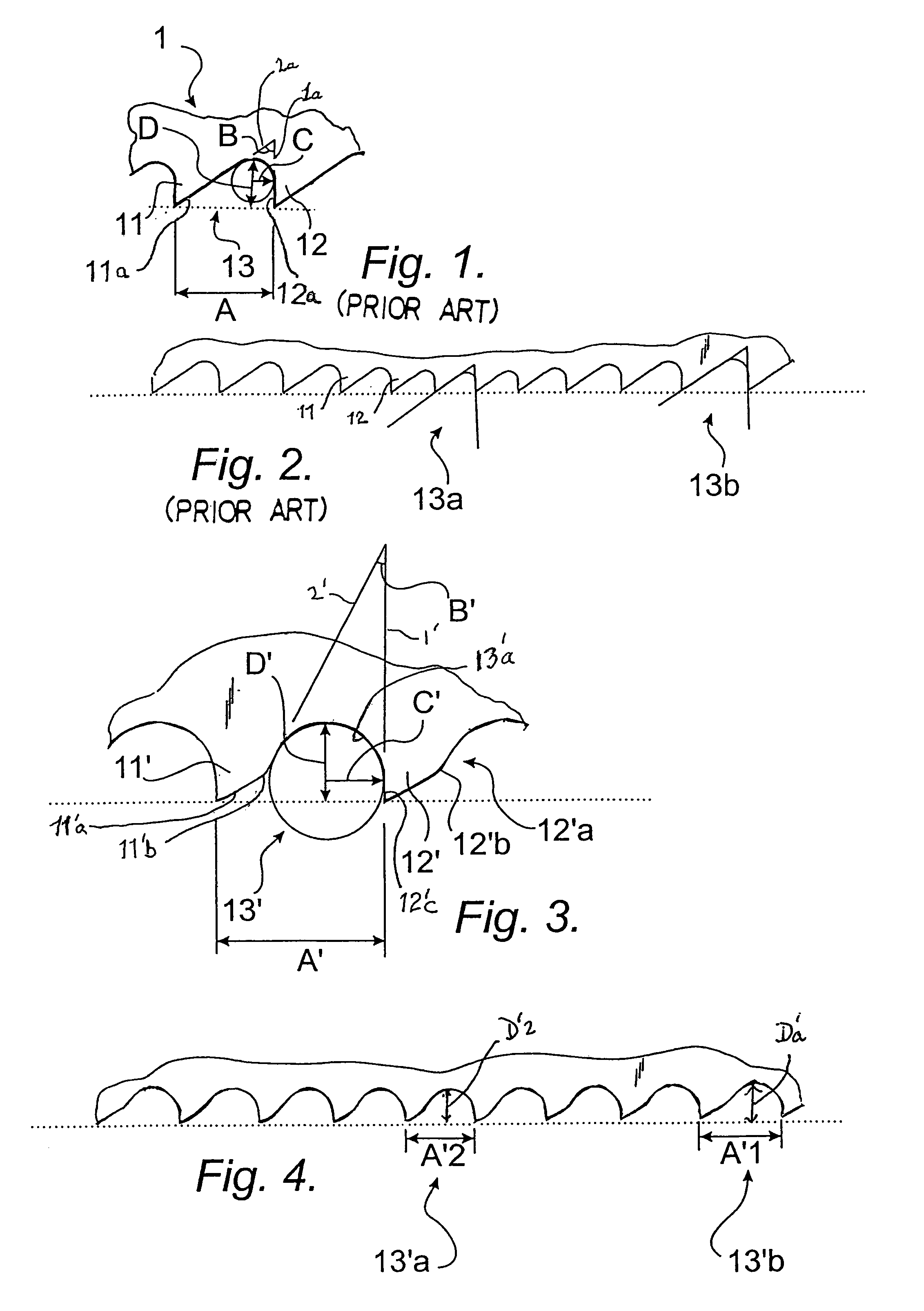Versatile bandsaw blade
a bandsaw blade and bandsaw blade technology, applied in the field of bandsaw blades, can solve the problems of insufficient tooth pitch, blades seldom changed, insufficient tooth strength and beam strength of the operator of the saw machine, etc., and achieve the effect of sufficient tooth strength and beam strength
- Summary
- Abstract
- Description
- Claims
- Application Information
AI Technical Summary
Benefits of technology
Problems solved by technology
Method used
Image
Examples
Embodiment Construction
[0021]FIG. 1 shows a conventional bandsaw blade 1 with leading and trailing teeth 11,12 separated by a gullet 13. Parameters pertinent to the present invention are the tooth distance A, the clearance angle B, the radius C of the gullet 13, and the depth D of the gullet 13. The expression “leading tooth” as used herein refers to any tooth which leads another, trailing tooth. A bottom of each gullet is radiused with a radius C. A clearance angle B is defined between successive teeth, each clearance angle B formed between a first line 1 which is tangent to the radiused bottom at a point where the radiused bottom joins the front 12c of the trailing tooth 12, and a second line 2 which is tangent to the radiused bottom of the gullet at a point where the radiused bottom joins to the back 11a of the leading tooth 11.
[0022]FIG. 2 shows a known bandsaw blade where the teeth are divided into groups, each group repeating the same variation in tooth distance. The figure shows that the smallest g...
PUM
| Property | Measurement | Unit |
|---|---|---|
| Angle | aaaaa | aaaaa |
| Angle | aaaaa | aaaaa |
| Ratio | aaaaa | aaaaa |
Abstract
Description
Claims
Application Information
 Login to View More
Login to View More - R&D
- Intellectual Property
- Life Sciences
- Materials
- Tech Scout
- Unparalleled Data Quality
- Higher Quality Content
- 60% Fewer Hallucinations
Browse by: Latest US Patents, China's latest patents, Technical Efficacy Thesaurus, Application Domain, Technology Topic, Popular Technical Reports.
© 2025 PatSnap. All rights reserved.Legal|Privacy policy|Modern Slavery Act Transparency Statement|Sitemap|About US| Contact US: help@patsnap.com



